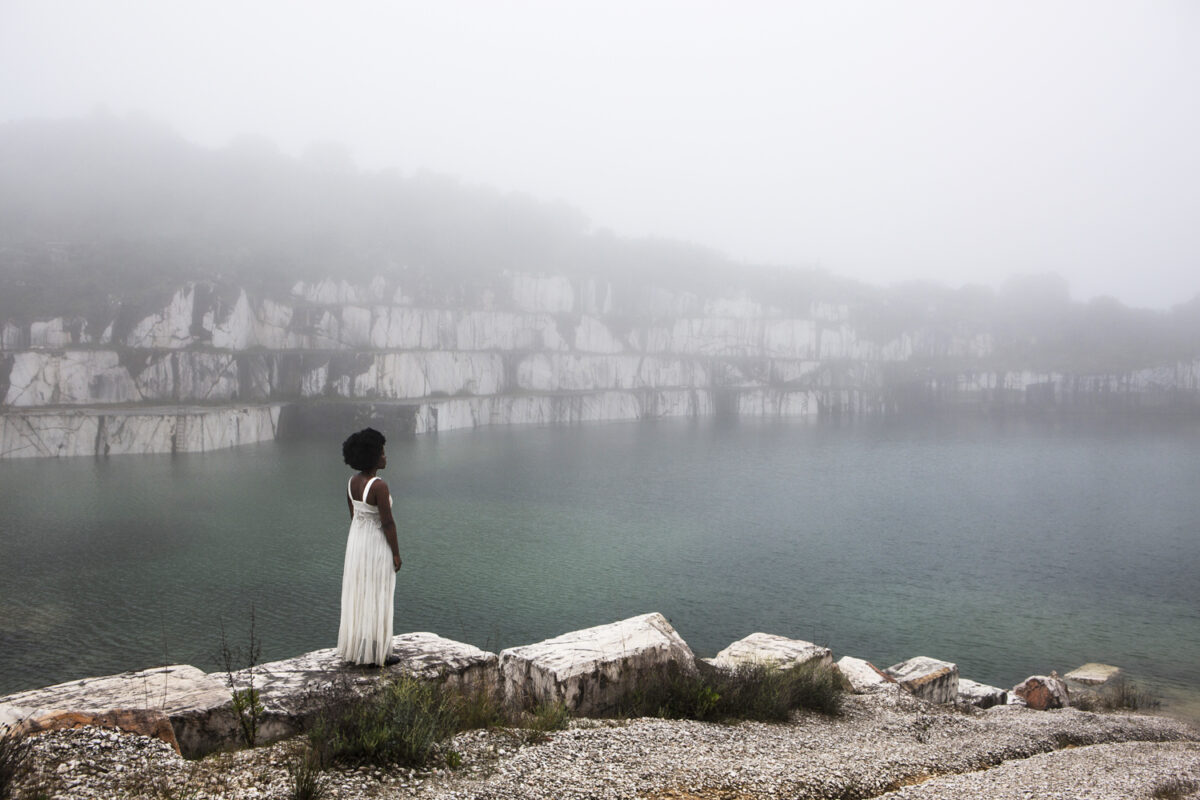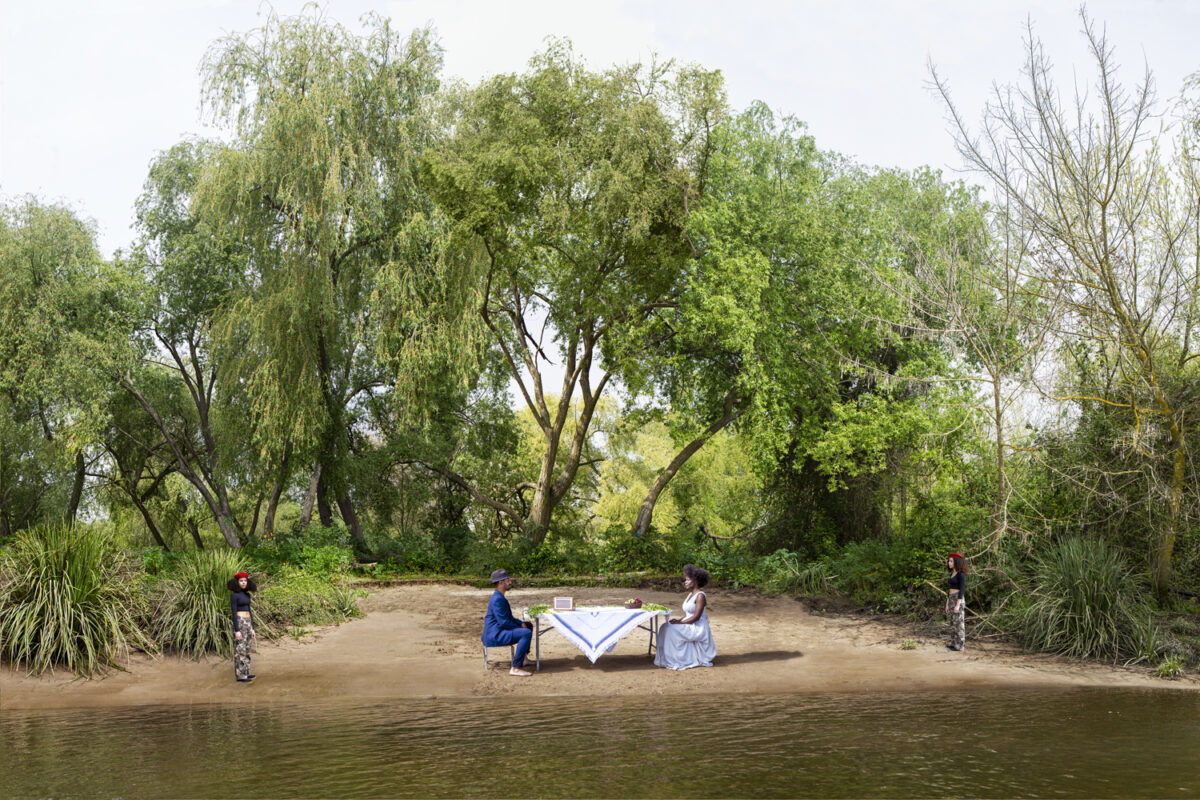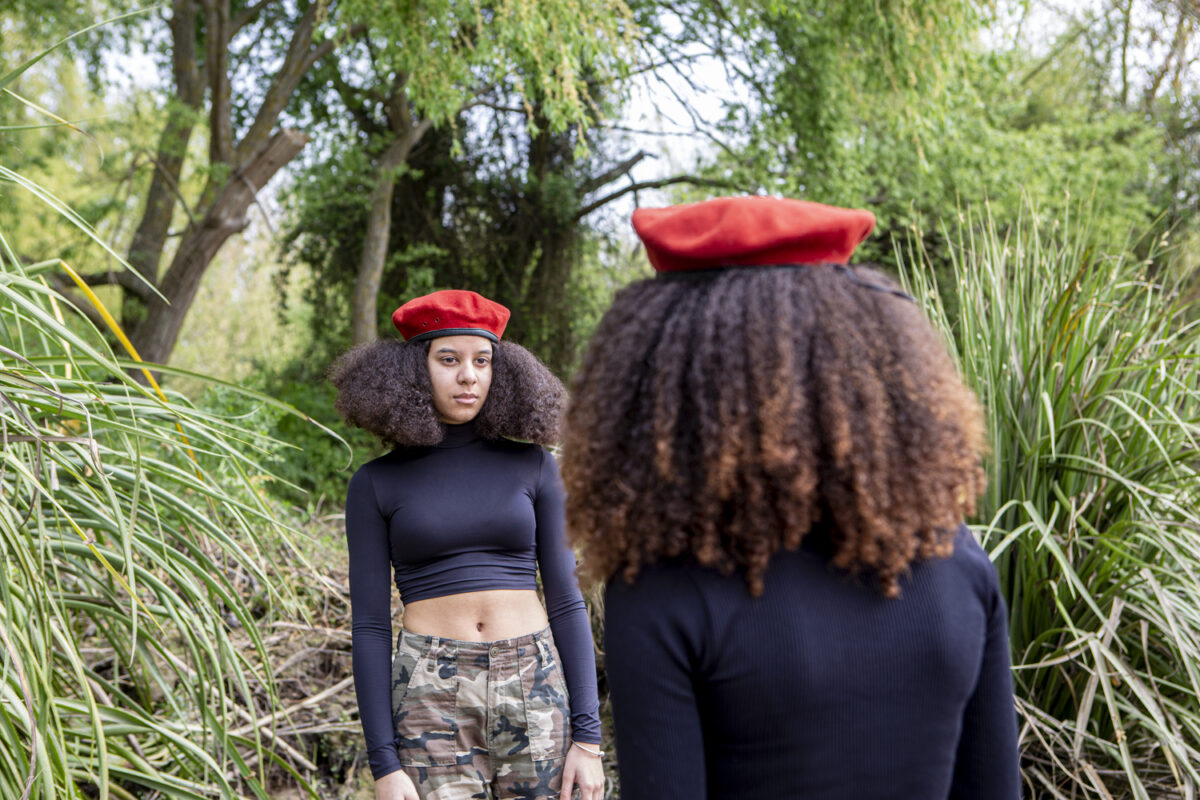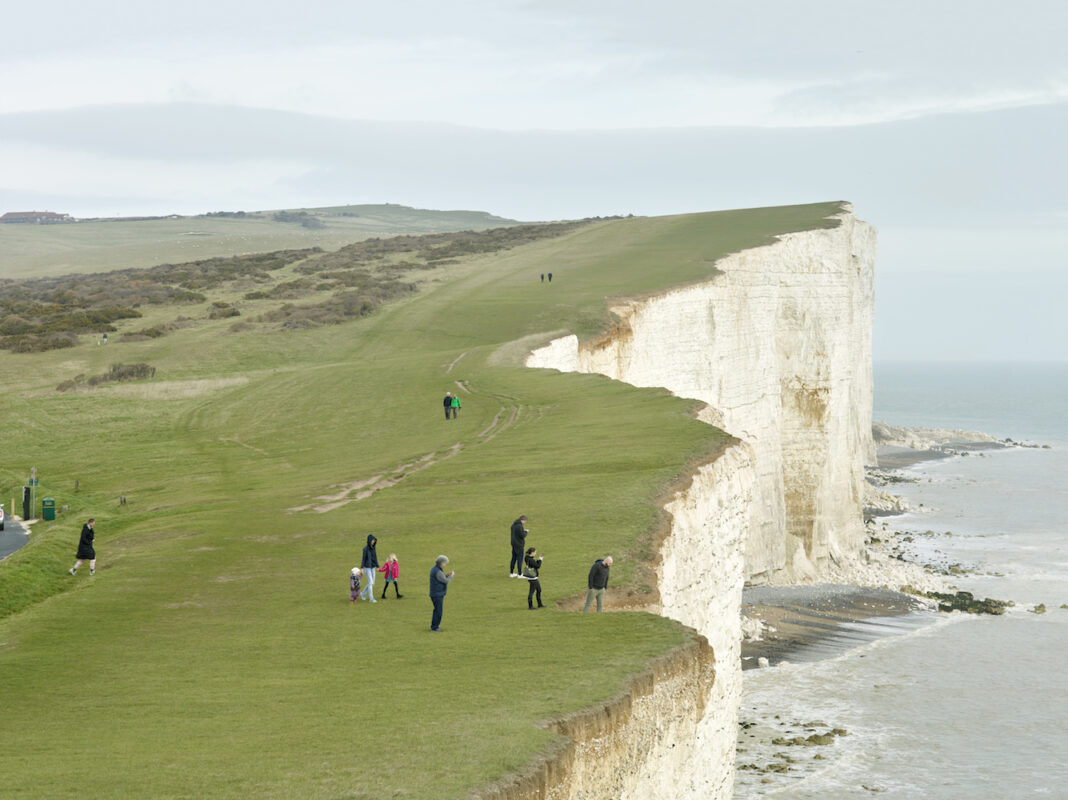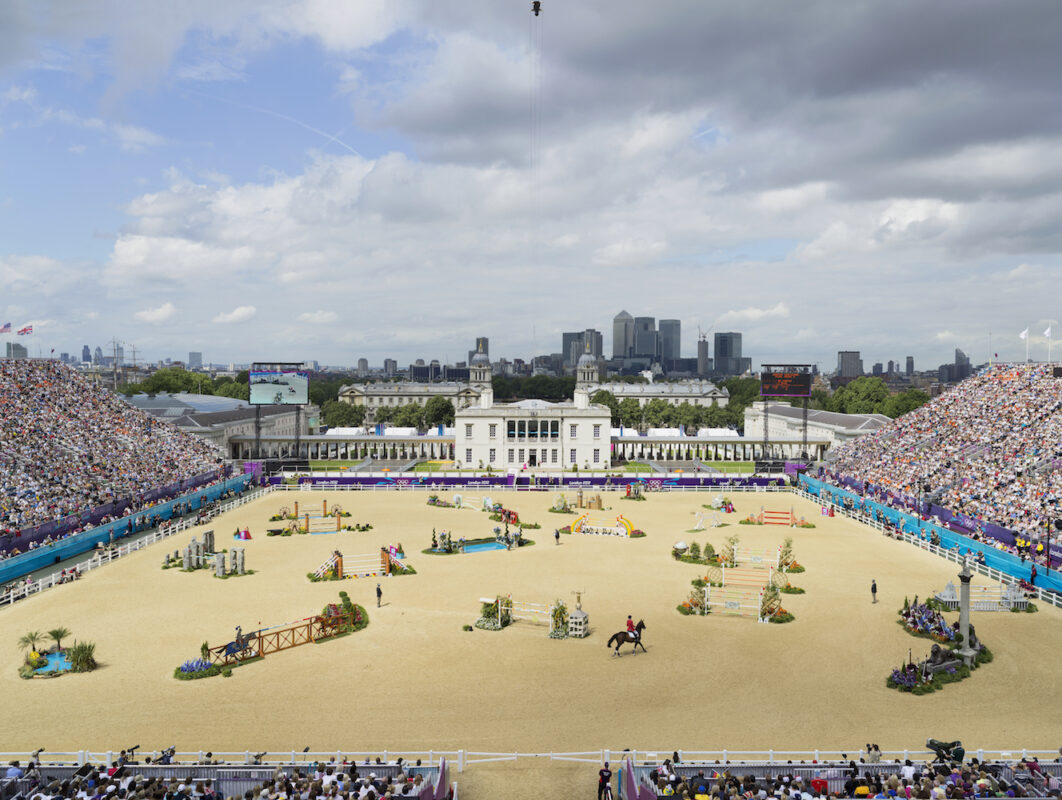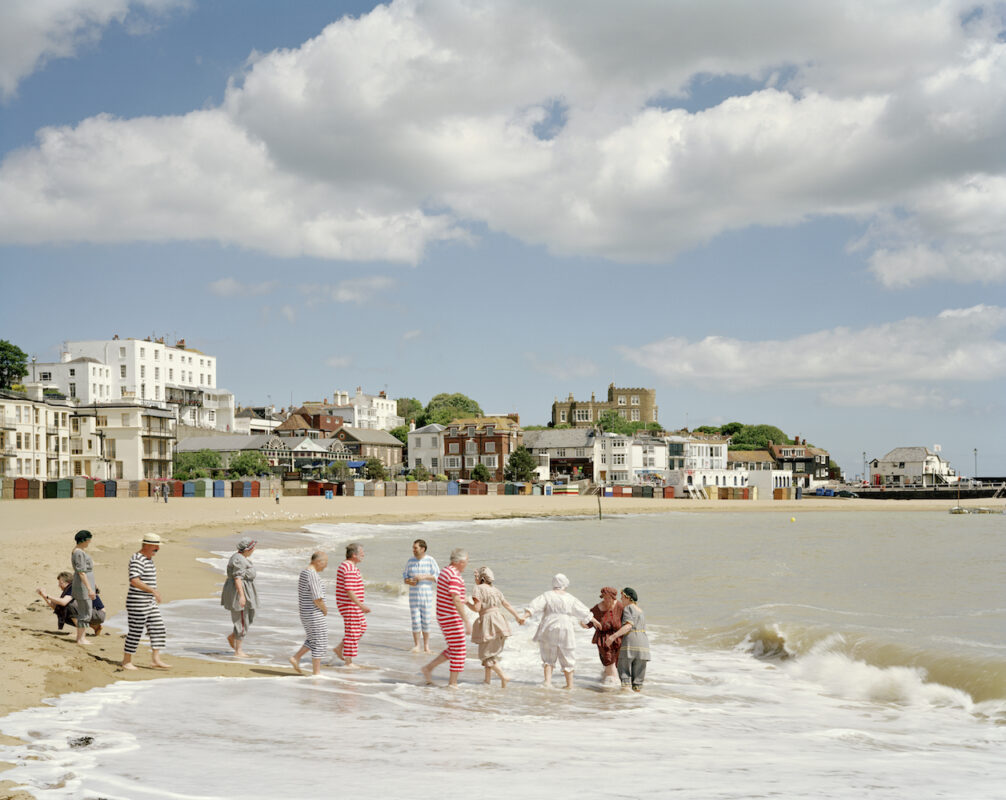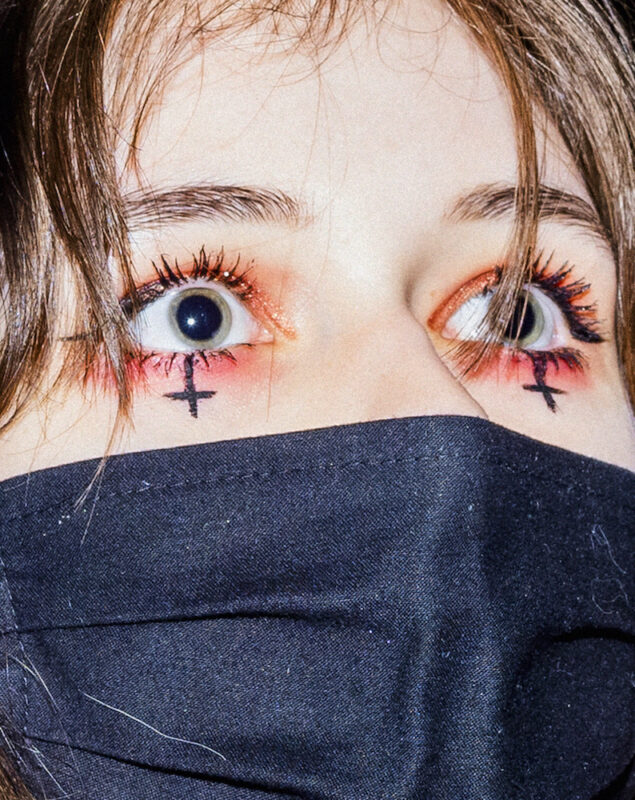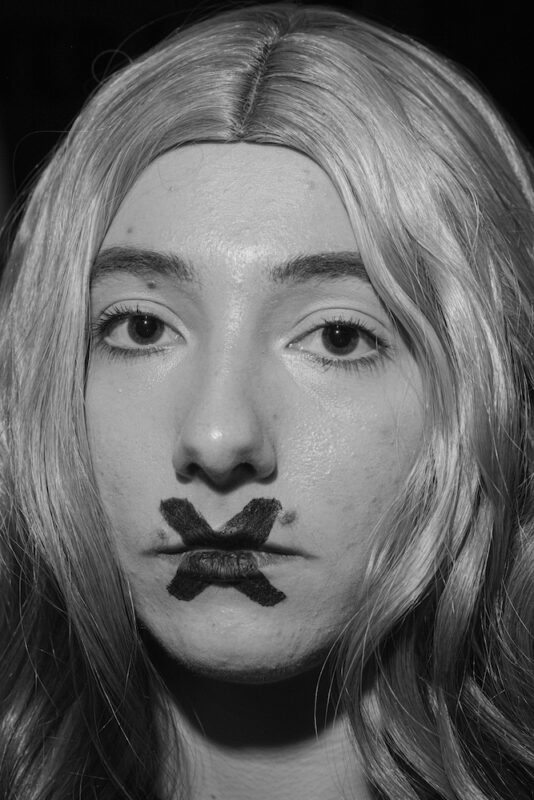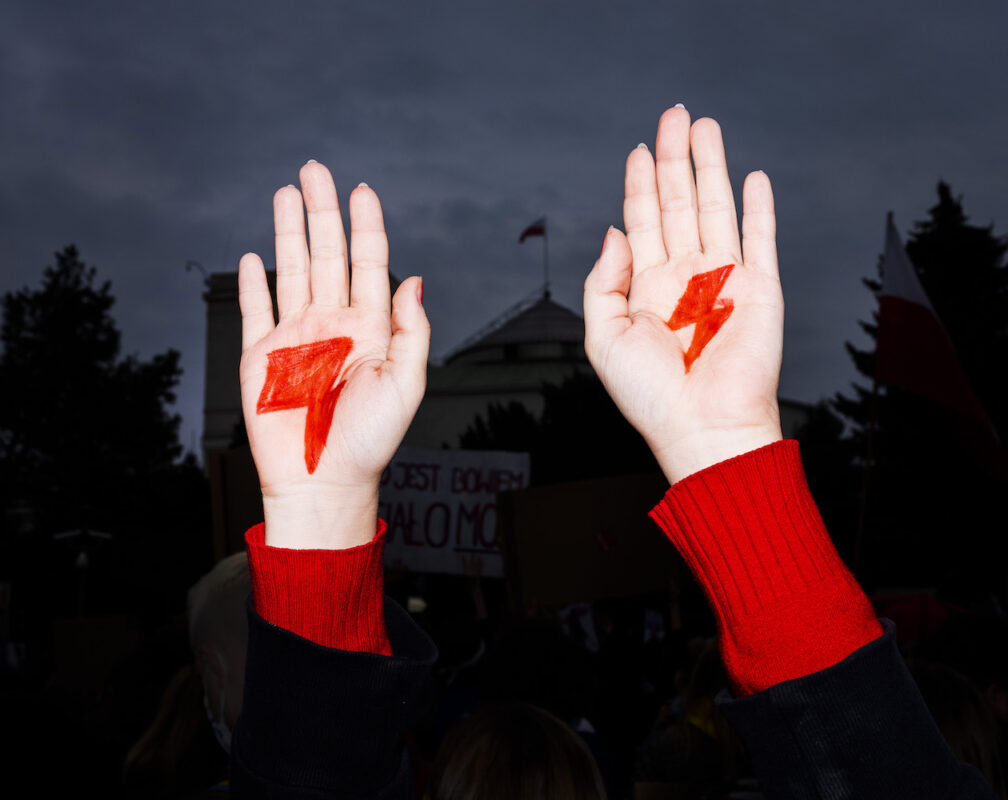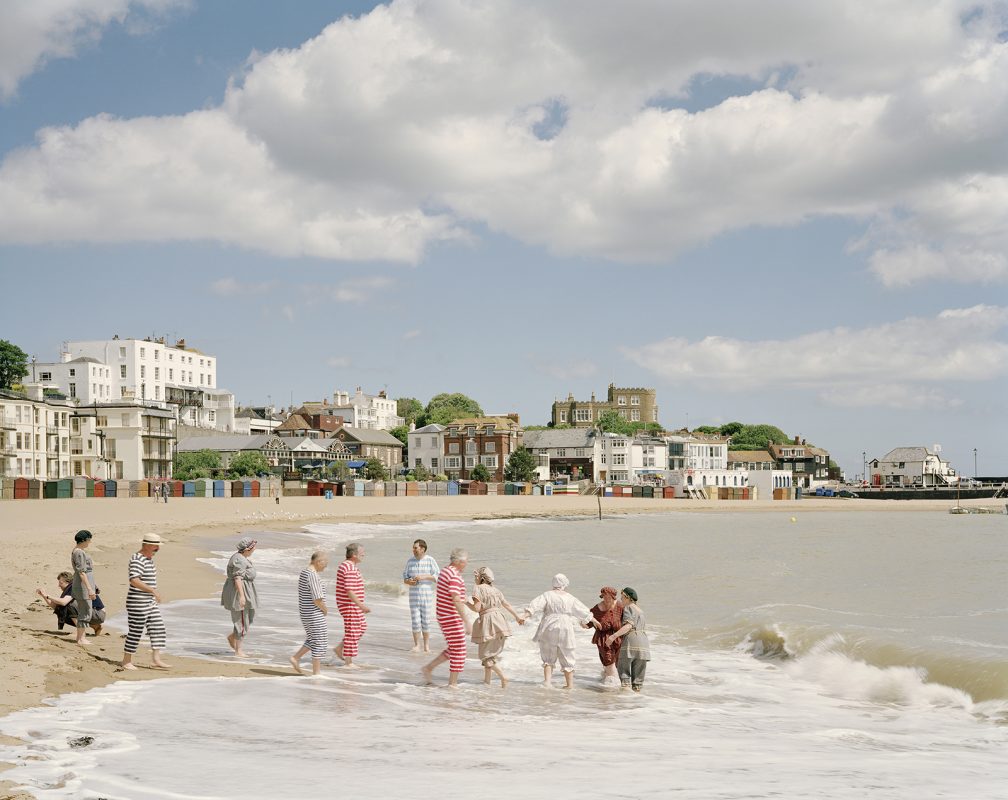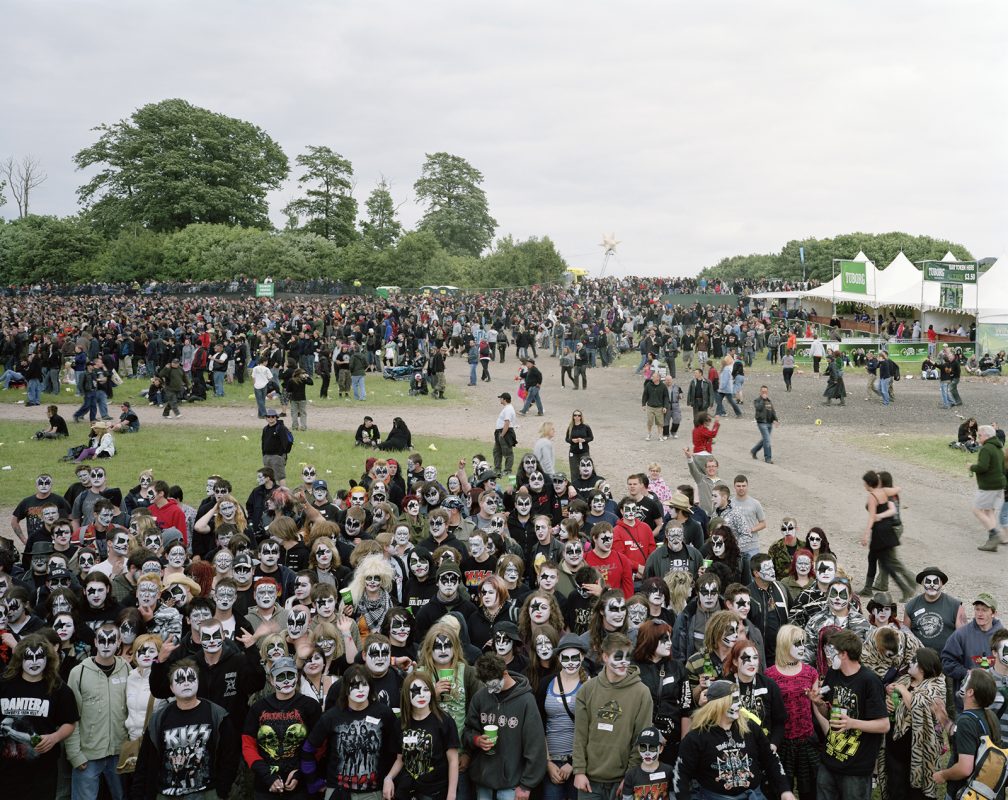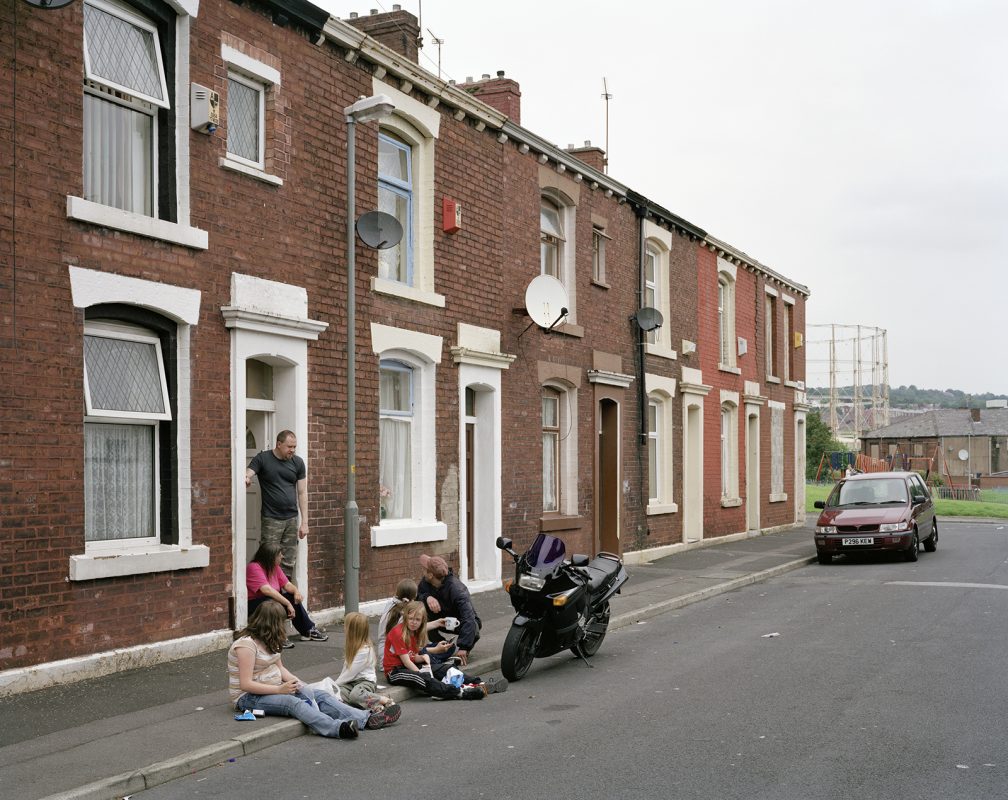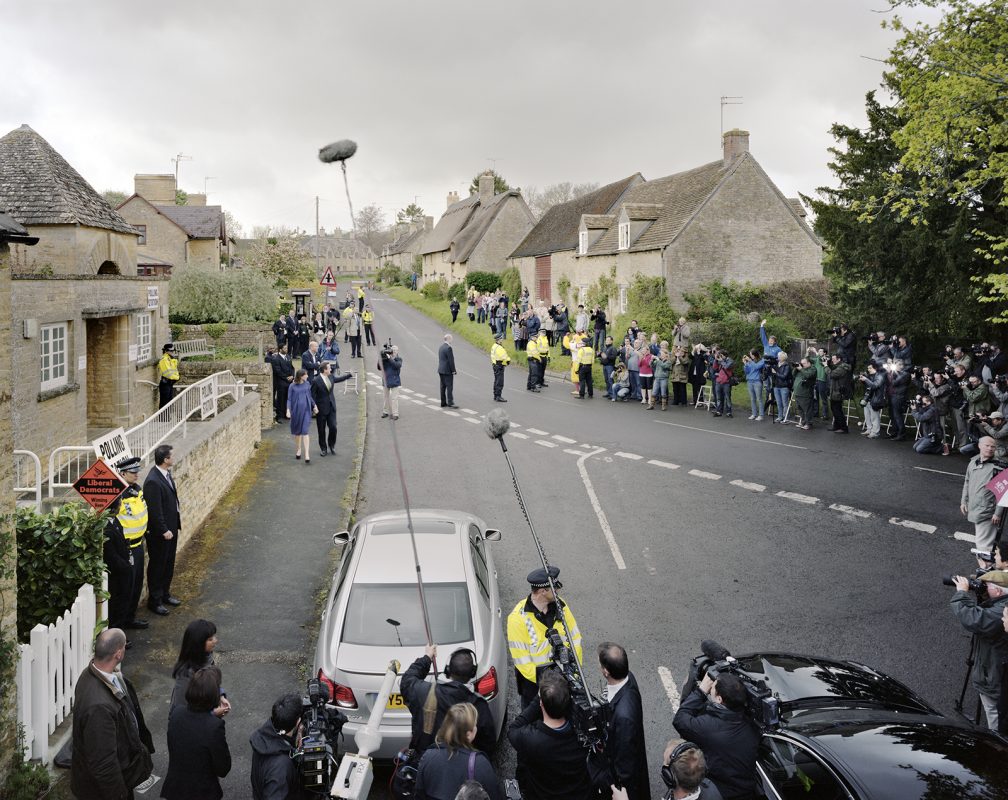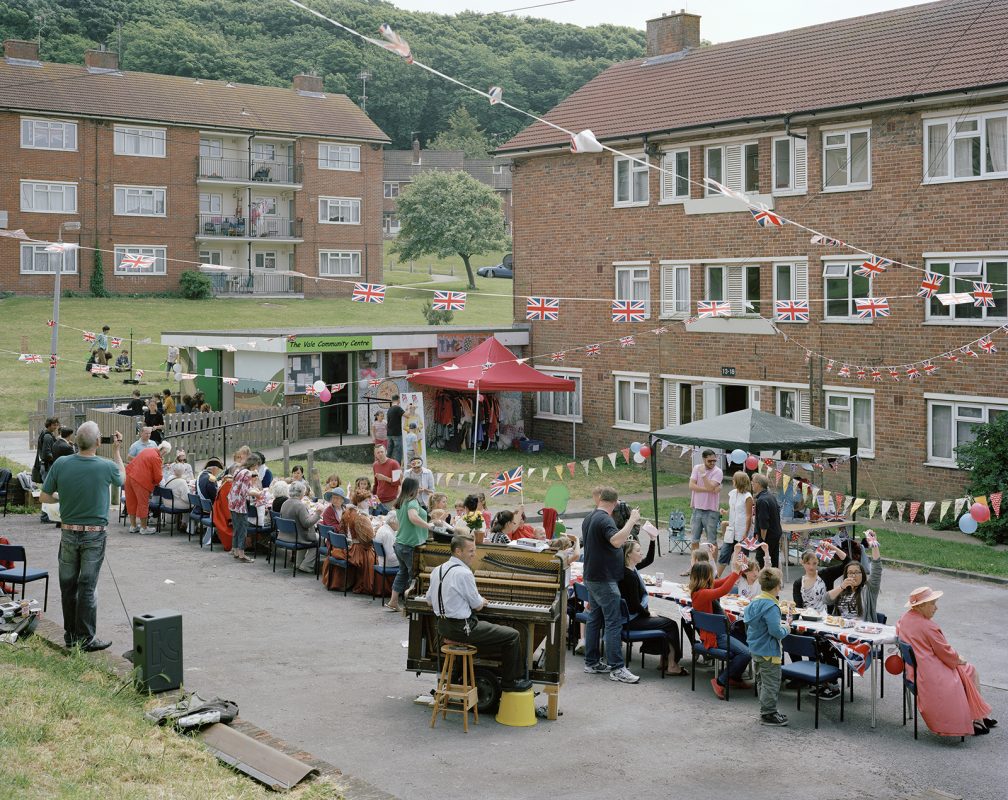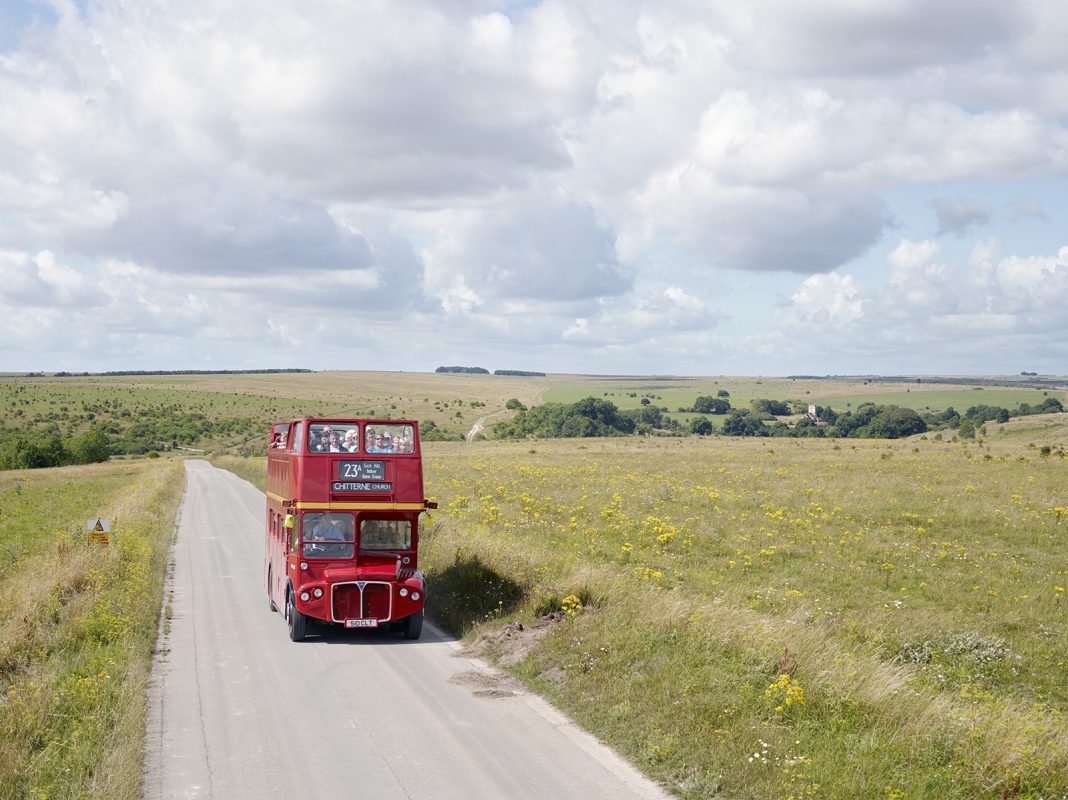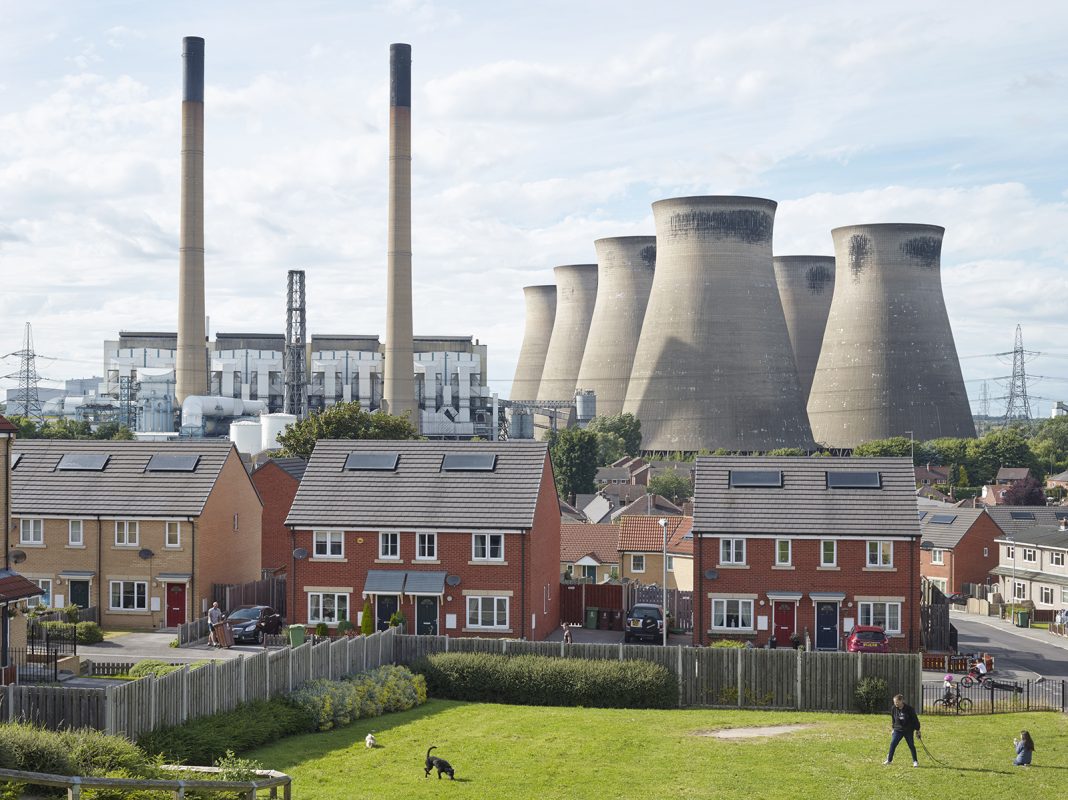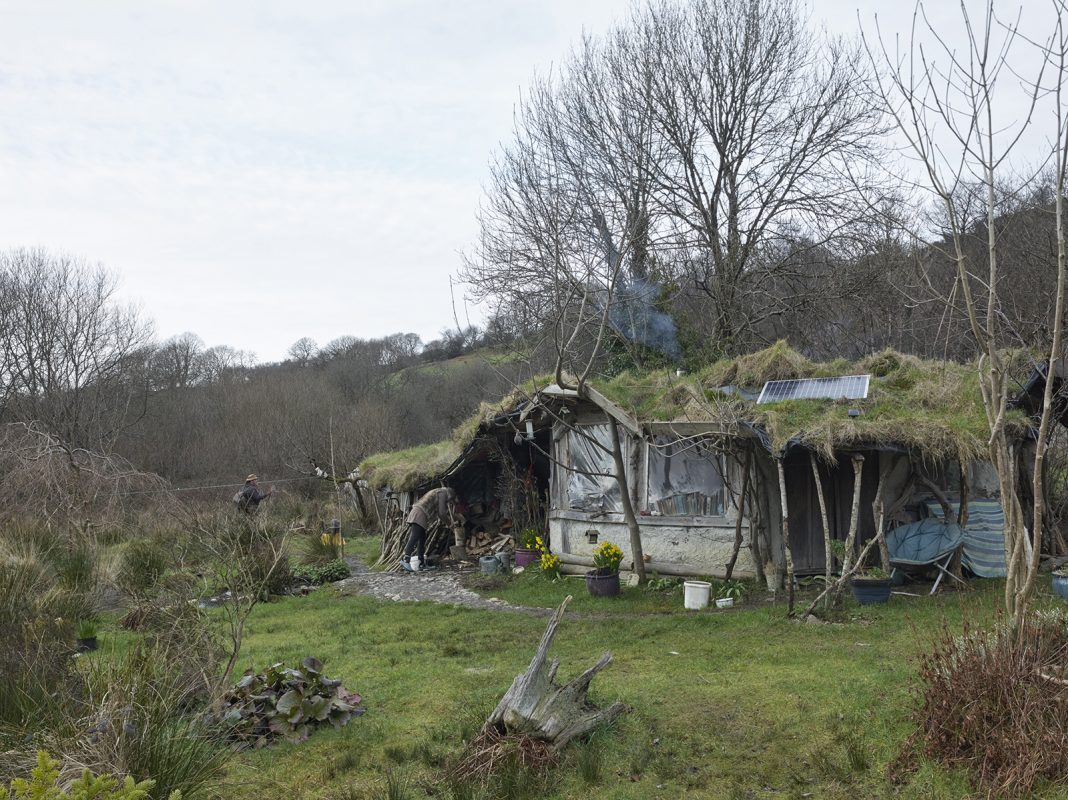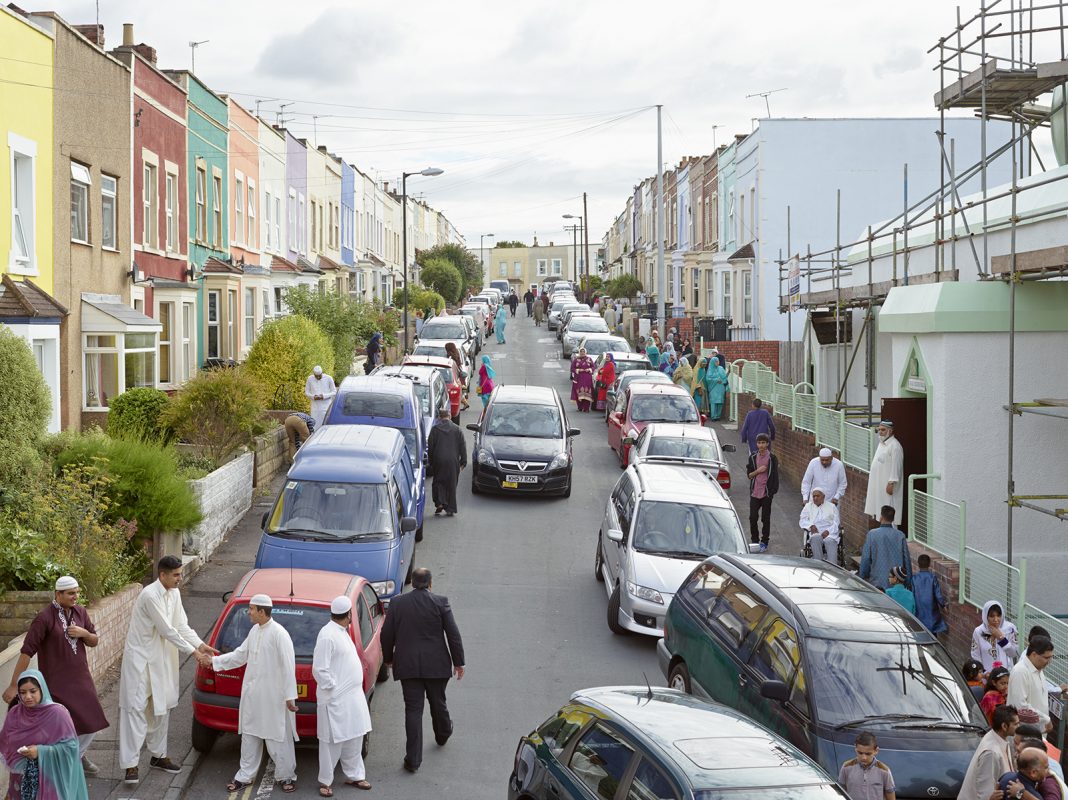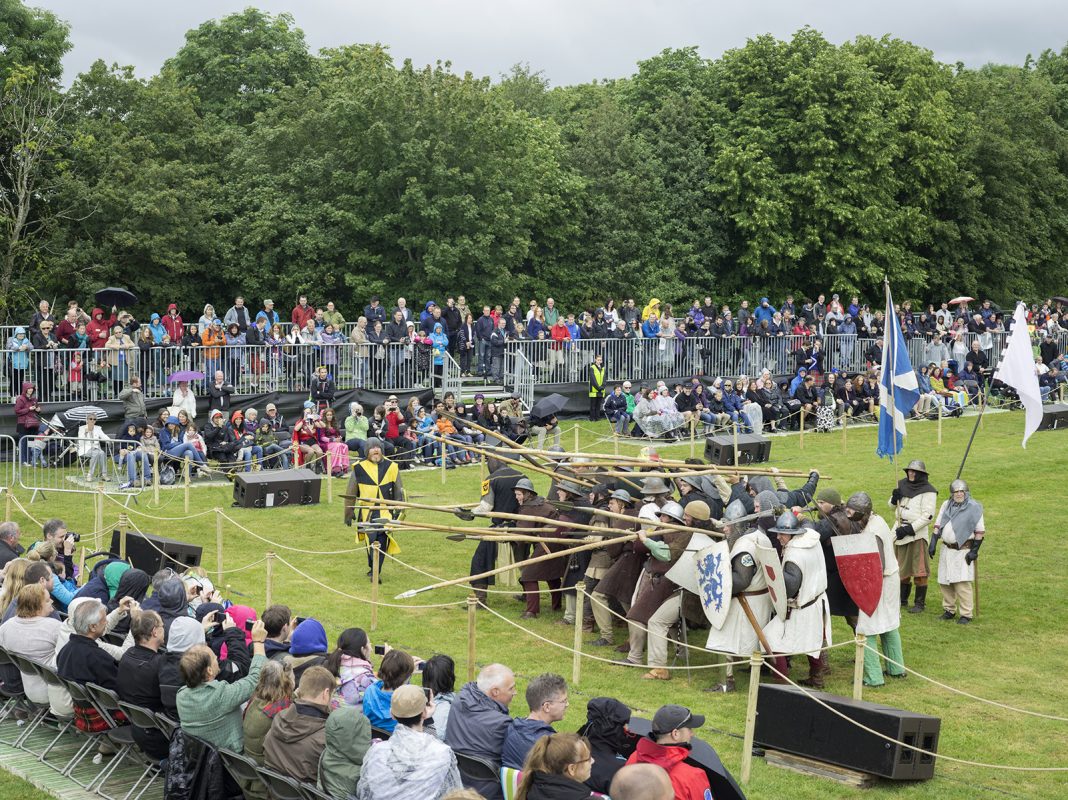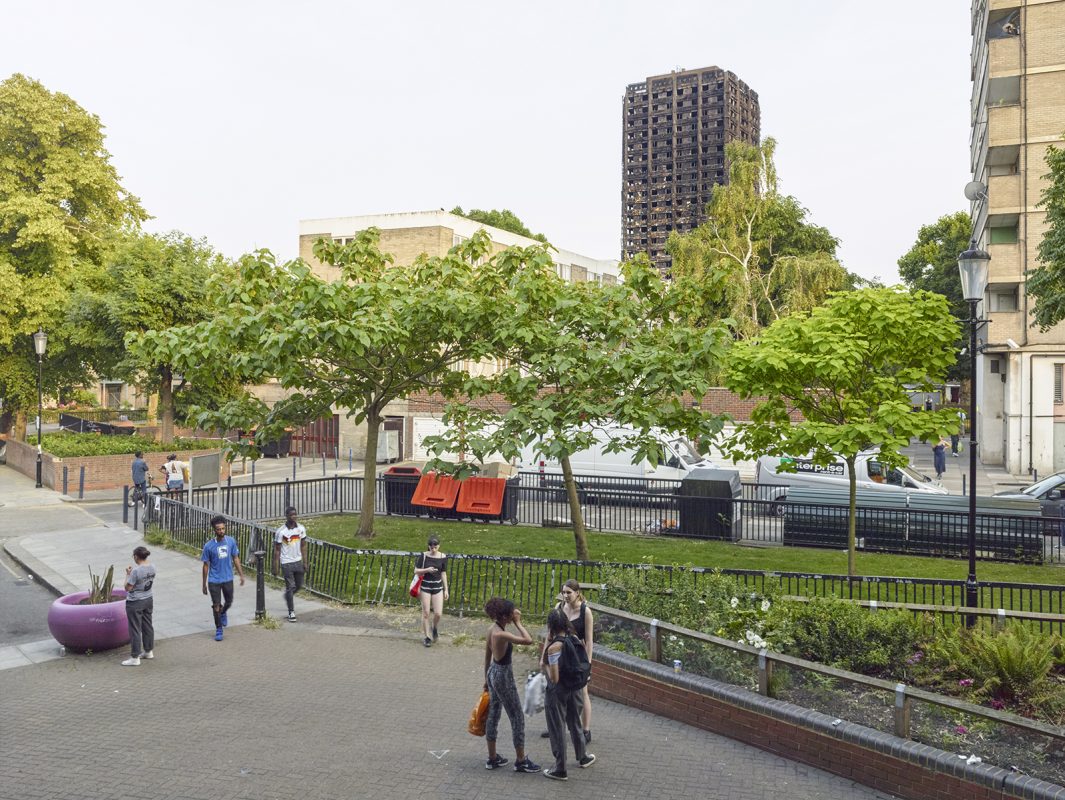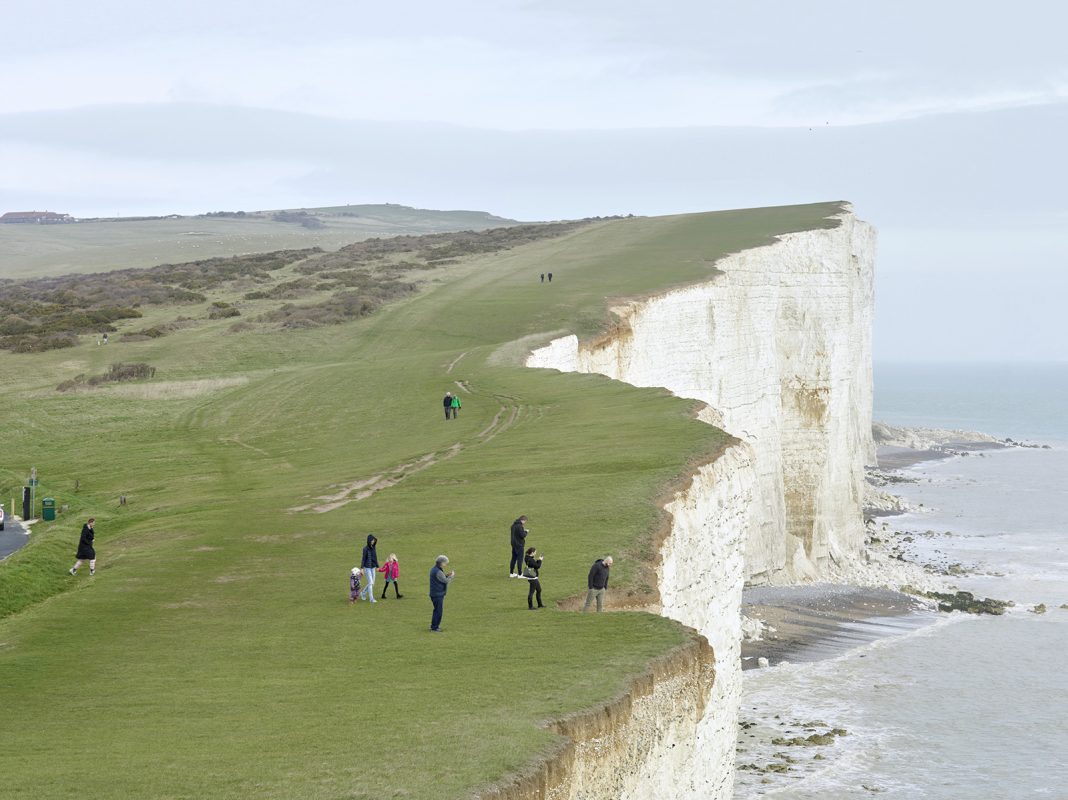Fotografia Europea 2023
Top three festival highlights
Selected by Tim Clark
1000 Words Editor in Chief Tim Clark reflects on the 18th edition of Fotografia Europea held in the Italian city of Reggio Emilia with a programme anchored in the theme ‘Europe Matters: Visions of a Restless Identity’, confronting the politics of inclusion and exclusion and the presence of history and culture in the present moment. Across 20 exhibitions, the curatorial proposition considers the relationship between conceptions of nationhood and democratic community, as well as the multicultural realities of European countries for the purposes of reconstruction, solidarity and alternative ways of existing together. We profile Mónica de Miranda, Simon Roberts and The Archive of Public Protests (A-P-P) – artists and collectives defined by their commitment to social change.
1. Mónica de Miranda, The Island
Chiostri di San Pietro
Upon entering the first floor at Chiostri di San Pietro, the vast sprawling 16th century monastic complex that serves as the hub for Fotografia Europea, visitors are confronted by an enlarged reproduction of the work from Mónica de Miranda entitled Whistle for the Wind. It figures the central protagonist from The Island series who is seen overlooking a vast expanse of water, sombre and subdued, as if expectant for answers. It leads into an exhibition of work comprising photographs, film and installation from the Portuguese-Angolan artist, known for her metaphysical investigations that unify postcolonial issues of geography, history and subjectivity related to Africa and its diaspora.
Though de Miranda has summoned an imaginary island to enact her fable, the reference is in fact the crudely named “Ilha dos Pretos” (Island of Blacks) – a denomination of oral tradition given in the 18th century to a community of people of African heritage that settled in the riverside area of the Sado River, southern Portugal; a place where the ghosts from Portugal’s colonial past intersect with the geological forces of deep time. Therefore, one might assume that what lies beyond in Whistle for the Wind are the vestiges of the past, those easily forgotten by a hegemonic system.
The creative and philosophical perspectives of alternate gazes, such as the queer gaze, the Black gaze and the female gaze, break with the idea of a white patriarchal heterosexual system – the many social clases that are ‘othered’ and too often treated as inferior – in order to find a new grammar or expression. They offer subversive counterpoints to the violence in the act of looking and consuming gendered imagery and ensuing reductive representations, whilst seeking beauty, empathy and valorisation of less prevalent experiences.
Political rebellion and resistance against the repression of a Black person’s “right to look” is what underscores bell hooks’ notion of the ‘oppositional gaze’. The late feminist, scholar and social activist first coined the term in her 1992 essay collection, Black Lives, to refer to a gaze that denies a spectator pleasure from looking, combating voyeurism and submits itself to a self-determined subject. It is not about scopophilia but defiance; looking as a form of communication, understanding and recognition. Therefore the ‘oppositional gaze’ affirms a right to identity and to see and document the world one knows or lives in. Perception can be a political act, as James Baldwin once ventured in a speech: “In the case of the American Negro, from the moment you are born every stick and stone, every face, is white. Since you have not yet seen a mirror, you suppose you are, too. It comes as a great shock around the age of five, six or seven to discover that the flag to which you have pledged allegiance, along with everybody else, has not pledged allegiance to you.”
Indeed, de Miranda commands a way of storytelling and coherent cultural memory as a means of empowerment. Holding up a mirror to project and reflect her model’s face, the four photographs entitled Mirror Me literally bring this into sharp relief: across the suite of images an assertive Black women is depicted wearing a captain’s cap, a cowboy hat and a horse-riding helmet. Costume and masquerade work together to form a protective mantle and the duality of the mirror allows us to discover a new system of reality. It evolves a possibility to imagine a different past, present and potential future – coalescing the women’s complex and multiple ideas of identity. There’s power, prestige and performance at work for these are portraits to dream in; an image gallery of internal visions and outward views, a ‘manifesting device’, a looking glass of self and otherness, an apparatus for transformation.
2. Simon Roberts, Merrie Albion: Landscape Studies From A Small Island
Chiostri di San Pietro
Simon Roberts’ Merrie Albion: Landscape Studies From A Small Island was first released as a monograph with Dewi Lewis in 2017 in the wake of the nationalist triumph of Brexit. Inside its pages, Roberts takes the temperature of the UK, offering insights into notions of identity, belonging and, specifically, what it means to be British at this significant moment in contemporary history. With his customary elevated perspective and tableaux style, we oversee views of places and the people that populate them to form a survey of a nation: on the one hand of the spaces and evolving patterns of leisure, the consumption and commodification of history, militarisation and to the lines of demarcation and exclusion in the landscape; and, in parallel, of subjects and events that have an immediate and enduring significance to Britain’s drastically changing trajectory of the past decade. As David Chandler has written in the book’s introduction: ‘[there is] an overriding sense of uncertainty and anxiety in Roberts’ national chronicle as it moves slowly towards the referendum and Brexit, and then culminates in the terrible iconic image of social inequality, injustice, and trauma formed by the blackened high-rise tomb of Grenfell Tower.’
Chandler goes on to point out that at its heart, Roberts’ work seeks to quell the visceral drama of events, not through immersing his camera in the drama of a scene but rather by stepping back. That way, the artist encompasses a fuller view of what’s unfolding, creating photographs that resolve into a multi-layered and nuanced array of comparative and linked information – tea parties, Eton College boat races, army recruitment stalls, Stonehenge, the London 2012 opening ceremony, the Royal Wedding, ‘Occupy London’ camps or trading floors of Lloyds Banking Group.
The cumulative effect of Merrie Albion is an offering; a poignant socio-political mood piece, the power and urgency of which never subsides with every year that passes amidst the continual calamities of the current UK government. Leading up to the exhibition installation, England football legend Gary Lineker was forced off BBC’s Match of the Day programme in a row over impartiality after comparing the vile language used to launch a new government asylum policy with 1930s Nazi Germany – the latest debacle in the so called ‘culture wars’, a clear distraction from the actual pressing issues facing the country today, chief among them: the cost of living crisis, wealth hoarding, inflation, energy bills, public health care systems at breaking point, criminalising the right to protest, taking away freedoms, multiple politician scandals and, of course, the failed and immensely costly project that is Brexit.
Roberts’ photograph Beachy Head, Seven Sisters Country Park, East Sussex, 24 March 2017, may serve as a useful coda here. Roberts says it best: ‘Taken in the very same week that the former UK prime minister Theresa May triggered Article 50, the start of the two year negotiation period to take Britain out of the EU, it shows ramblers exploring the chalk cliffs on the country’s south coast. An instantly recognisable symbol of Britain, the cliffs were recently voted one of the top 20 breath-taking views in the UK. But they also represent a boundary, between land and sea, high and low, the known and unknown, Britain and the outside – a potent symbol of Britain’s increasing isolation and political separation from Europe.’
3. The Archive of Public Protests, You’ll never walk alone
Chiostri di San Pietro
The Archive of Public Protests (A-P-P) was founded in 2019 by Rafal Milach, together with other photographers, academics and activists. Its mission is to examine social and political tensions in Poland from 2015 onwards, particularly among the young generation who have taken to the streets in great swathes with increasing regularity to demonstrate against the country’s leadership. A-P-P has now created a significant repository of work via its semi-open online platform and free newspapers centred on particular events or happenings. Dealing with the mounting complexities that define our troubled times, A-P-P’s stated aim is a “duty to archive” matched with a need to study the visual aspects of protest in the struggle against breaches of the law, discrimination and violence of various kinds. Its results articulate various states of ‘unfreedom’. Through a mix of raw footage, slogans used by protestors, bold design, sound and photographs, their exhibition You’ll never walk alone, as a biodimensional experience, is akin to being amongst a protest. It explores issues and inequalities long silenced by the Polish government, ranging from topics including state and police oppression, climate emergency protests, the LGTBQIA+ community, pro-choice Women’s Strike, Belarussian solidarity protests in Poland, the refugee crisis at the Polish-Belarussian border and anti-war and solidarity with Ukraine protests in Poland. The context is the Anthropocene, and histories unfold individually and collectively, at a hyper-local level but, of course, also resonating on the global stage.
Many members of A-P-P are active participants in the demonstrations whilst also observing the events with a critical eye, noting the shifting characteristics particularly around the use of language, which is said to have become more radical, vulgar even, given the levels of frustration and anger. And though the marches are peaceful, the message is always a bold one. The word “Wypierdalac” [Get the fuck out] is routinely shouted from within the crowds. This is combined with a distinct visual spectacle: people marching to the sound of drums and chants, banners hoisted high, flamboyant costumes as well as spontaneous performances throughout city streets and in front of monuments in the heart of Warsaw and beyond. The tools for intervention are both animated and artful. So too is the iconography, such as the symbol of a crimson-coloured lightning bolt that proliferates most notably throughout the Women’s Strike: as both face and body paint, projected onto building and even as fashion accessories. Similarly, red is the colour of choice: red ink, red clothes, red paint – the visual language of solidarity.
As a project dedicated to the relationship between archival practices and publication-making as a site of learning and solidarity (‘solidarity’ being the operative word as it was name of Poland’s first trade union founded in 1980), A-P-P is not interested in representing resistance or “going viral”. Instead, there is a strong desire to correct firmly established and outdated narratives that are propagated from the confines of mainstream media, the latter now almost entirely controlled by the state. Nor is it an attempt at objectivity, especially given the fact that the many far-right marches that frequent Poland’s streets and public spaces are not documented here. It is a partial account – selective and subjective. Yet A-P-P draws us into the efforts of those individuals and groups who are pushing back, those who are laying bare the ideological tactics of control and manipulation through a different kind of massification of images. Milach himself has explained in a recent interview: “By releasing the newspaper and creating this alternative circulation of images, we control the narrative and their usage. This is crucial, especially today – facing all the fake news or half-truths that influence our political and social life more and more. By creating a distribution channel – one of many – we can crystallise the message. It’s a coherent, closed document, which is manifesting certain clear ideas.” ♦
Fotografia Europea 2023 ran from 28 April – 11 June 2023.
—
Tim Clark is Editor in Chief of 1000 Words and Artistic Director for Fotografia Europea in Reggio Emilia, Italy, together with Walter Guadagnini and Luce Lebart. He also currently serves as a curatorial advisor for Photo London Discovery and teaches at The Institute of Photography, Falmouth University.
Images:
1-Mónica de Miranda, Whistle for the wind, Portugal, 2022. © Mónica de Miranda, Commissioned by Autograph London.
2-Mónica de Miranda, The Lunch on the beach (after Manet), Portugal, 2022, 350 x 230 cm (6 parts of 115 x 116.50 cm) © Mónica de Miranda.
3-Mónica de Miranda, Double force, Portugal, 2022. © Mónica de Miranda.
4-Simon Roberts, Beachy Head, Seven Sisters Country Park, East Sussex, 14 March 2017. © Simon Roberts.
5-Simon Roberts, Equestrian Jumping Individual, Greenwich Park, London, 8 August 2012. © Simon Roberts.
6-Simon Roberts, Broadstairs Dickens Festival, Isle of Thanet, 19 June 2008. © Simon Roberts.
7-Rafal Milach, Women’s Strike Protest against nearly total abortion ban, Warsaw, Poland, 22.10.22. © Rafal Milach, courtesy The Archive of Public Protests.
8-David Zieliński, Protest in defence of free media, Krakow, Poland, 12.08.21. © David Zieliński, courtesy The Archive of Public Protests.
9-Rafal Milach, Women’s Strike Protest against nearly total abortion ban, Warsaw, Poland, 22.10.22. © Rafal Milach, courtesy The Archive of Public Protests.

